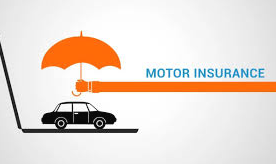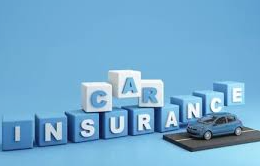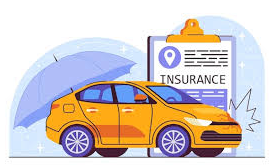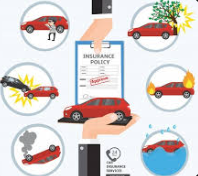Introduction to Rising Premiums
Drivers across the country are facing noticeable increases in car insurance premiums as we move further into 2025. The rise in costs isn’t arbitrary; it’s the result of a shifting insurance landscape influenced by a combination of economic, technological, environmental, and societal factors. Insurers base their rates on data-driven assessments of risk, and as the world changes, so do the variables they consider.
One key aspect of the rising premiums is the ripple effect of economic pressures, which influence the cost of repair, replacement, and medical care. The increasing complexity of vehicles also plays a role, as today’s cars are designed with cutting-edge technologies that require specialized repairs. Natural disasters are another contributing factor, as they have led to a growing number of claims in recent years. Additionally, shifts in how people commute and use their vehicles continue to impact the volume and nature of claims insurers are processing.

Understanding the interplay of these factors is essential for drivers to navigate these changes effectively. By being aware of what is driving these costs, individuals can make informed decisions about their insurance coverage and better prepare for potential changes in their premiums.
Inflation and Economic Factors
The rising cost of goods and services has had a direct impact on car insurance rates, as insurers adjust their pricing models to reflect these changes. One major area affected is the cost of vehicle repairs. Replacement parts, especially those for modern cars, have become significantly more expensive due to supply chain disruptions and increased manufacturing costs. Labor expenses have also risen, as mechanics and technicians command higher wages in an increasingly competitive job market.
Medical costs further contribute to the upward pressure on premiums. When accidents occur, insurers are often responsible for covering medical expenses, which have steadily climbed over the years. From hospital stays to physical therapy, these growing costs are reflected in the rates that policyholders pay. Furthermore, legal expenses associated with accident claims have seen an uptick, adding another layer of financial burden for insurers.

Beyond these factors, the economic environment influences how insurers manage their operations and calculate risk. For example, changes in interest rates can affect the returns insurers earn on their investments, which are a key source of income. When these returns decline, companies may need to compensate by increasing premiums to maintain profitability. Additionally, market instability can lead to greater caution in risk assessment, prompting insurers to take a more conservative approach to pricing.
As inflation persists, it also indirectly affects consumer behavior. Many individuals may delay maintenance or repairs, potentially increasing the likelihood of accidents or more severe vehicle damage. This creates a ripple effect, as higher claim volumes and larger payouts further strain the system, ultimately contributing to rate adjustments. Economic conditions create a complex web of challenges that insurers must navigate, and these realities shape the pricing that policyholders encounter.
Advancements in Vehicle Technology
Modern vehicles are increasingly designed with sophisticated systems that aim to improve safety, efficiency, and overall performance. These innovations, while beneficial for drivers, have introduced new challenges when it comes to insurance costs. Features like automatic emergency braking, lane-keeping assistance, adaptive cruise control, and parking sensors rely on intricate hardware and software that are often costly to repair or replace after an accident.
One of the primary reasons for higher repair costs is the integration of advanced materials and specialized parts. For instance, bumpers, which used to be relatively simple to replace, now often house sensors, cameras, or radar systems that significantly increase their price. Similarly, windshields with built-in technology for heads-up displays or rain sensors require precise calibration during replacement, adding to labor costs.
Additionally, the rise of electric and hybrid vehicles has introduced unique complexities. Batteries, electric motors, and specialized powertrains require technicians with specific expertise and tools, which drives up the cost of labor. Insurance providers must account for these increased expenses, which are ultimately reflected in premiums.

The push for connectivity in cars has also added to these challenges. Many modern vehicles come equipped with internet-enabled features such as real-time traffic updates, infotainment systems, and vehicle diagnostics. While these capabilities enhance the driving experience, they also create potential risks, including cybersecurity concerns. Addressing issues related to hacking or software vulnerabilities may involve costly solutions, influencing insurers’ calculations.
Furthermore, as vehicles become more reliant on technology, the potential for minor accidents to result in expensive claims has grown. Even low-speed collisions can lead to substantial repair bills due to the presence of fragile, high-tech components. This shift in repair dynamics means insurers must adjust their risk models to account for the growing financial burden associated with these technological advancements.
Increasing Natural Disasters
Natural disasters have become more frequent and severe in recent years, leading to a substantial impact on the insurance industry. Events such as hurricanes, floods, wildfires, and severe storms result in widespread property damage, including damage to vehicles. As the costs associated with repairing or replacing vehicles after such events rise, insurance companies are forced to adjust their pricing models to account for these increased risks.
In areas particularly prone to extreme weather, insurers often face higher claim volumes, as natural disasters can damage hundreds or even thousands of vehicles at once. This puts a significant strain on their financial resources, as payouts for large-scale events can reach billions of dollars. For policyholders, this means higher premiums, especially in regions where climate-related risks are escalating.

Advances in weather prediction technology have allowed insurers to better forecast areas at high risk for natural disasters, enabling them to adjust rates based on geographic location. This means that drivers in areas with a history of extreme weather events may see steeper premium increases compared to those in lower-risk regions. However, even drivers outside high-risk areas are not immune to rising rates, as the financial burden of widespread disasters often impacts the entire industry.
The increasing unpredictability of weather patterns also makes it challenging for insurers to accurately calculate future risks. Unexpected storms or severe flooding in areas that were previously considered low-risk can lead to sudden spikes in claims. As a result, insurers may adopt more cautious pricing strategies to safeguard their ability to cover future payouts.
The sheer scale of some recent disasters has also highlighted vulnerabilities in infrastructure, which further exacerbates the issue. Roads, bridges, and drainage systems that are not built to withstand extreme conditions can intensify the damage caused by these events. For drivers, this adds to the complexity of the situation, as such widespread destruction indirectly affects the claims process and the overall cost of coverage.
Changes in Driving Behavior
The way people drive and use their vehicles has shifted significantly over the past few years, impacting the insurance industry in notable ways. One major change is the fluctuation in traffic patterns due to evolving work arrangements. With more individuals continuing to work from home or adopting hybrid schedules, some roads are seeing lighter traffic, while others experience congestion during non-traditional hours. This unpredictability has influenced accident trends, making it challenging for insurers to predict risk accurately.
Another contributing factor is the increase in delivery and rideshare services. As these industries expand, more vehicles are being used for commercial purposes, which often leads to higher wear and tear, as well as a greater likelihood of accidents. This shift in vehicle usage can result in higher claim volumes, which insurers take into account when determining premium rates.

Additionally, the resurgence of leisure travel and road trips has introduced new dynamics to the risk landscape. With more people opting to drive long distances for vacations, there’s an increased potential for accidents in unfamiliar areas or under varying road conditions. This trend has added another layer of complexity for insurers in assessing the frequency and severity of claims.
Distracted driving remains a persistent issue, with more drivers engaging in activities like using smartphones or infotainment systems while on the road. These behaviors significantly increase the chances of accidents, further contributing to higher claim numbers. As insurers analyze these risks, the prevalence of distracted driving directly influences premium rates.
Lastly, younger drivers entering the roads and the growing population of older drivers have also contributed to shifts in risk profiles. Younger drivers may lack experience, while older drivers may face challenges such as slower reaction times or health-related limitations, both of which can affect accident rates. Insurance companies monitor these demographic trends closely, factoring them into the overall pricing models that determine premiums.
Regulatory Changes and Policies
Government regulations and policy updates can significantly influence the structure of car insurance premiums. For instance, changes in minimum coverage requirements can directly affect the cost of policies, as insurers adjust their offerings to comply with new standards. These requirements may mandate higher levels of liability coverage, which often results in increased premiums for policyholders.
In some cases, regulatory bodies introduce laws aimed at consumer protection, such as restricting certain underwriting practices or requiring more transparency in how rates are determined. While these measures benefit drivers by ensuring fair treatment, they may also lead to administrative expenses for insurance companies, which can be passed on to consumers in the form of higher premiums.

Additionally, some states are reevaluating the use of factors like credit scores, occupation, or education level in determining insurance rates. Restrictions or bans on these factors could lead to a shift in pricing models, potentially resulting in higher costs for some drivers while lowering costs for others.
The rise of telematics-based policies, which use data collected from drivers’ behavior to set rates, has also prompted regulatory scrutiny. In some regions, governments are examining the privacy implications of these programs and imposing stricter guidelines on how insurers can collect and use driver data. These regulatory efforts could influence how insurers develop and price usage-based insurance policies.
Environmental policies may also play a role in premium adjustments. For example, legislation that encourages the adoption of electric vehicles (EVs) might indirectly impact rates, as insurers account for the unique repair costs and risks associated with these cars. Similarly, stricter emissions standards or policies promoting green infrastructure could alter driving patterns, prompting insurers to reassess risk calculations.
As the insurance industry continues to evolve alongside regulatory changes, companies must stay adaptable to comply with new laws while maintaining profitability. Drivers, in turn, should monitor how these shifts may impact their premiums and coverage options.
Conclusion and Future Outlook
Looking ahead, the ongoing shifts within the insurance industry highlight the importance of adaptability for both insurers and policyholders. As economic conditions, technological developments, and environmental challenges reshape the landscape, the need for dynamic strategies in pricing and risk assessment becomes increasingly evident. While these changes can create financial challenges for drivers, they also present opportunities to reevaluate coverage needs and explore cost-saving measures.
For example, understanding how factors like vehicle technology and geographic risks impact premiums can help drivers make more informed decisions. Opting for vehicles with lower repair costs or implementing safe driving habits may contribute to reducing expenses over time. Additionally, taking advantage of available discounts, such as those for bundling policies or maintaining a good driving record, can provide some relief from rising costs.

On the industry side, insurers continue to refine their approaches by leveraging data and emerging technologies. Usage-based insurance programs, for instance, offer a more personalized way to assess risk and calculate premiums. While these advancements bring potential benefits, they also raise questions about privacy and accessibility, which will likely shape future regulations and consumer expectations.
As these trends develop, staying proactive is essential for managing insurance costs. Reviewing policies regularly, asking questions about new programs or discounts, and comparing options across providers can help policyholders find solutions that align with their budgets. Furthermore, being prepared for external factors, such as extreme weather or shifting driving patterns, allows drivers to anticipate potential adjustments and respond accordingly.
In a time of rapid change, awareness and preparation are key to navigating the evolving insurance market. By staying informed and taking advantage of available resources, drivers can better position themselves to manage the challenges and opportunities that lie ahead.



